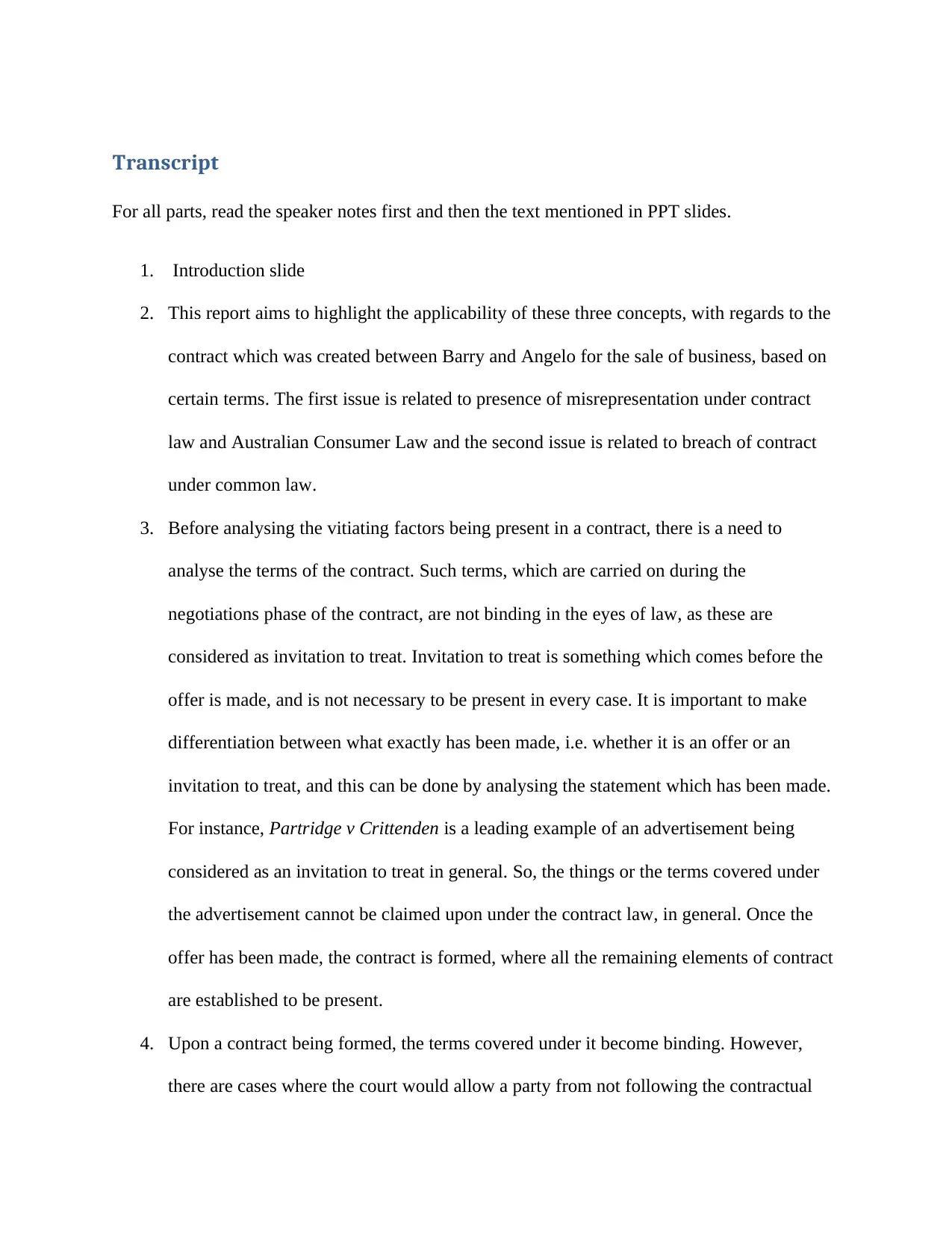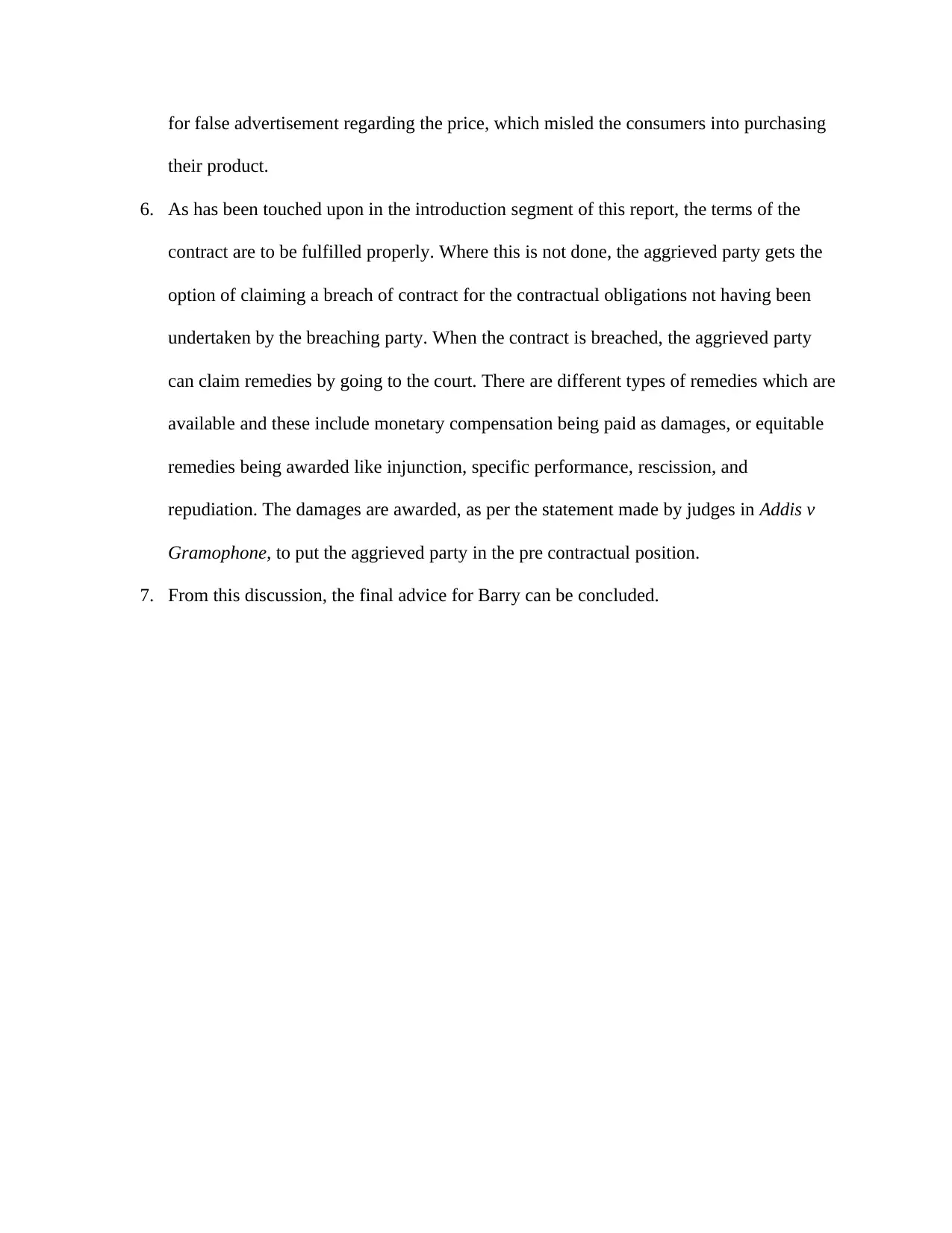Report on Contract Law Issues: Barry vs. Angelo's Business Sale
VerifiedAdded on 2021/05/31
|3
|809
|368
Report
AI Summary
This report provides a comprehensive analysis of contract law principles, focusing on misrepresentation and breach of contract within the context of a business sale agreement between Barry and Angelo. The report begins by examining the essential elements of a contract, including the distinction between offers and invitations to treat, and the significance of binding contractual terms. It then delves into the concept of misrepresentation, differentiating between statements of fact and opinion, and exploring relevant case law such as Bisset v Wilkinson and Smith v Land & House Property Corp. The report also covers the remedies available for misrepresentation, including those provided under the Australian Consumer Law, with specific reference to Section 29 and 35 of the Competition and Consumer Act 2010. Furthermore, the report addresses breach of contract, outlining the remedies available to the aggrieved party, such as damages and equitable remedies like injunction and specific performance, referencing Addis v Gramophone. The report concludes by offering advice for Barry based on the analysis of these legal principles.
1 out of 3










![[object Object]](/_next/static/media/star-bottom.7253800d.svg)